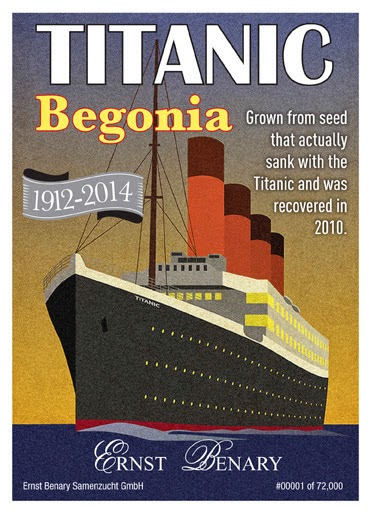After finding documentation connecting the container packets to Benary, the company regained possession of the seeds. The mere fact the seeds were recovered from the site of the most historic shipwreck in modern history was astounding enough to the Benary team, but then came another shocking and almost impossible discovery. Gudrun Rufeger, a seed technology specialist, brought up the idea of germinating the seed to see if it was still viable. Given the fact that the container was kept at low temperatures of 32-35 F and high pressure of 5,557 psi at 12,500 feet below sea level, the seeds were preserved almost cryogenically.
 |
| Gudrun Rufeger analyzing Titanic Begonia liners. |
Rufeger, along with two professors from the University of Hoenheim, based in Stuttgart, Germany, Karl Schmid and Albrecht Melchinger, successfully grew out the begonia seeds in 406-count plug trays and 24-count, 84-size liners, another astounding feat in this intriguing horticulture story! With sales beginning on April 14 of this year, the 102nd anniversary of the Titanic’s sinking, the plant was named the “Titanic Begonia,” according to Benary co-managing director Matthias Redlefsen. As for quantities and prices, Matthias joked, “Very low, and very high!”
This one-of-a-kind recovery story does not come often for the horticulture industry, but it surely is one worth publicizing! Congrats to Ernst Benary and its [kind of] new ‘Titanic’ Begonias!
 |
| Ernst Benary – ‘Titanic’ Begonia |